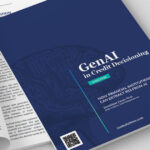As the world came to grips with the growing pandemic earlier this year, consumers in the United States were wrestling with more than just the novel coronavirus. Individual debt, and credit card debt in particular, has been a significant issue as folks feel the economic impacts of a national shutdown.
Charging It Forward…
As of May 2020, almost “half of US adults (47%) currently have credit card debt, up from 43%…in early March.”[1] Not only are more consumers holding debt, they are holding more of it – current estimates for outstanding credit card debt are approximately $1.07 trillion, with an average of just over $7,000 owed per household.[2]
Not helping matters is the fact that many people who lost their jobs over the last couple of months are turning to credit cards to cover essential expenses, further adding to their outstanding debt. Nearly a quarter of “U.S. adults with credit card debt have added to it during the pandemic”.[3]
This reality is weighing heavily on people. A recent survey indicated that 45% of debtors are stressed about credit card debt, and 15% are “very” stressed about it.[4] That stress is particularly acute in younger Americans; 34% of millennials with credit cards “say they went more deeply in debt because of the pandemic” as compares to only 23% of Generation Xers and 15% of baby boomers.[5]
…But Paying It Back?
As consumers rack up credit card charges (and the related stress), they are faced with some hard choices, including when and how to deal with the additional debt. 60% of recent survey respondents are planning to make more than their minimum payments, while others are looking to transfer balances to lower APR cards. Some will make the minimum payments, some will look for credit counseling, but a worrisome minority (13%) “either don’t plan on paying anything (9%) or don’t have a plan at all (4%).”[6]
Fortunately for debtors, card issuers are taking proactive steps to help. Many issuers are offering payment deferral or forbearance, giving consumers some much-needed breathing room. Issuers are also offering cardholders different short- and long-term payment plans, waiving fees, and payment delays of two to three months.
Consumers also got some help in the form of Federal stimulus checks earlier this year. For many individuals, though, that money would better used to pay for essentials like groceries and gas. Ted Rossman, analyst from Credit Cards.com, recommends holding on to the stimulus funds versus paying down card debt: “You’ll want to have cash on hand just in case. Don’t use all of it.”[7]
Post-Covid Reality
Payment deferrals, waived fees, forbearance and stimulus money are all good news for individuals holding card debt. Eventually, though, issuers are going to require repayment of outstanding debt, and borrowers might find themselves in a tight spot.
A forecast from UBS posits that “[u]p to $110 billion in credit card debt…would reach delinquency” if national unemployment rate reaches 12.6% by then of 2020. While the current national rate is higher than that, the rapidly changing employment landscape leaves a lot of questions unanswered.
For the last 12 years, card issuers have been on the leading edge of an economic expansion – and have not had to fundamentally change much about collections. That is all shifting as a result of the pandemic and subsequent economic fallout, and issuers very well may be facing a tsunami of delinquent accounts.
As those accounts potentially move into collections, issuers will have to navigate new federal and state legislation, changing customer expectations and different contact channels than they did in 2008. Without a modern, flexible collections system, they may face challenges like segmenting their portfolios and reaching customers through their preferred channels.
Leading issuers can get ahead of the competition by implementing a collections and recovery solution that empowers them to update and enhance their strategies in real time. With the right solution, they can automate and streamline the process, from pre-delinquency through delinquency and recovery – and put the right pieces in place to keep their customers loyal and happy through it all.
[1] https://www.creditcards.com/credit-card-news/coronavirus-spring-debt-poll/
[1] https://www.thebalance.com/consumer-debt-statistics-causes-and-impact-3305704
[1] https://www.creditcards.com/credit-card-news/coronavirus-spring-debt-poll/
[1] Ibid
[1] Ibid
[1] Ibid
[1] https://www.cnbc.com/2020/05/04/almost-half-of-america-now-carrying-credit-card-debt-and-more-of-it.html[/vc_column_text][/vc_column][/vc_row]





